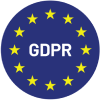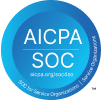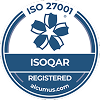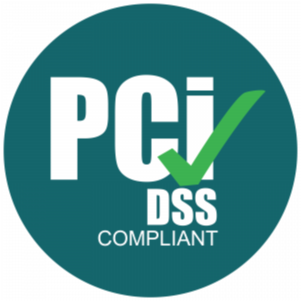Employee experience (EX) is the journey your staff take, from the moment they’re hired to the minute they leave. It includes workplace culture, leadership, physical or remote environments, relationships, compensation, autonomy, and growth opportunities.
The need for improved EX and better measurement can be traced back to the workplace disruptions of 2020. Sudden shifts to remote work and furloughs showed that people, not processes, drive success. The result was a perceptual shift as employees realized they wanted more than just competitive pay and good benefits, and companies recognized the revenue benefits tied to satisfied staff.
Now, EX matters more than ever. Employees expect to feel valued and respected by organizations, and they’re not willing to settle for less than they deserve.
Businesses that get EX right see stronger engagement and performance. Those who miss the mark risk burnout and “quiet quitting.”
Our 2025 guide to EX dives into key components of a great experience, why it matters for your workplace, metrics to track, and how technology helps make this possible. We’ll also explore implementation strategies, actionable frameworks, and future trends to help optimize the employee experience.
Before we dig into the details, it’s worth calling out the difference between employee engagement and employee experience. Engagement is a direct result of experience. Poor experiences decrease engagement, which in turn lowers productivity. Improve the experience, and engagement naturally rises.
With the basics squared away, let’s get into the complete EX guide.
The Business Case for Employee Experience
There’s an obvious qualitative benefit to a great employee experience: Staff are happier.
But there are also a host of quantitative benefits that come from enhanced EX. As noted by SHRM, staff are 68% less likely to consider leaving if their employee experience is positive. According to data from Gallup, improved EX leads to 78% lower absenteeism, 23% higher profitability, and 18% higher productivity.
In other words, great EX is a smart investment. Consider a company earning $2 million annually that spends $250,000 on improving EX. Following Gallup’s metrics, this company could see a 20% profit increase, or a $400,000 gain each year, which is 1.6X the initial investment.
Let’s take a look at some real-world examples:
Hilton
Hilton ranks first on the Fortune 100 Best Companies to Work For 2025 list, with 95% of staff saying it is a great place to work. Employees highlight feeling welcome when they joined the company (98%) and being treated as a full member regardless of their position (96%). In addition, 97% of staff are proud to tell others they work at Hilton.
The impact? Employees feel empowered to go above and beyond for their guests thus creating returning loyal customers. There is a solid case to be made that there is correlation between this employee satisfaction and Hilton Worldwide Holdings’ revenue increase every year since 2021 and consistently placing among most profitable hotel brands globally.
< Read about how Embassy Suites by Hilton boosted employee engagement with Sogolytics >
Synchrony
Synchrony comes in at number two on the list, with 94% of staff agreeing that it’s a great place to work. Staff say that management is honest and ethical in its business practices (94%), and another 94% say the company offers special and unique benefits.
Cisco
Cisco rounds out the top three, with 96% of staff citing it as a great place to work. The same number also says that staff at the company are given a lot of responsibility, while 97% say people at Cisco care about each other, and 98% say they can take time off when they think it is necessary.
Core Components of Employee Experience
While the concept of employee experience isn’t new, its importance in building staff loyalty has grown significantly. Many human resources (HR) teams gather feedback through surveys and pulse checks; however, what they measure, and how insights are applied, varies from business to business.
Standardization can help companies ensure they’re delivering and maintaining a positive employee experience. This starts with an evaluation of the core components of EX: Culture, workspace, and technology.
Culture shapes how people interact and the overall “vibe” of your organization.
Workspace refers to both physical workspaces and remote workspaces. Crowded offices or limited remote resources can negatively impact the employee experience.
Ideally, companies want to give staff a measure of control over both their physical and remote work environments.
Technology covers both the employer-approved technology used by staff and their access to personal technologies such as mobile devices.
Outdated or cumbersome systems can hurt productivity and morale. According to S&P Global, legacy tech can “kill recruiting efforts, increase attrition, and ruin the employee experience.” Modern and user-friendly tools that promote collaboration and communication can significantly improve EX.
Digging Into the Details
Fully understanding how these components impact employee experience requires direct feedback. If you’re not asking, you’re likely making assumptions. And when you assume… well, we all know how the saying goes. Making assumptions runs you the risk of spending time and money on changes that don’t matter to employees, or that negatively impact their experience.
Let’s put this into context. A company aiming to boost remote worker productivity might invest time and money on a tracking software to monitor user activity on all company-issued devices. While this increases visibility, it can also feel invasive and erode trust. Instead, asking employees what support they need, may reveal more effective and less disruptive solutions, like regular check-ins or structured milestone planning.
The Employee Experience Framework
Next, let’s talk about creating a structured EX framework. The goal of this framework is twofold. First, it helps segment the employee lifecycle into distinct stages allowing companies to apply the right processes at the right time to deliver positive EX. Second, frameworks help identify moments that matter — key events during the employee lifecycle that can make or break their relationship with your organization.
The employee experience framework can be broken down into six stages:
Recruitment and hiring
This stage starts at your job post and continues through the interview process, practical testing, and the job offer.
Key moment: Your responses to candidate questions about culture, benefits, compensation, and social interaction. Staff will remember what you said, and how it aligns with what you practice.
Onboarding
How easy do you make it for a new employee to ramp? How quickly do they gain network access? Have they been introduced to their teams in a timely manner? What training materials have they been given and how does it align to their learning style?
Key moment: Training. Providing knowledgeable, personable trainers who know the ins and outs of your business helps set new hires up for success. Poor training practices lead to performance problems that aren’t the fault of new staff, in turn creating frustration.
Day-to-day operations
This is the longest-running aspect of EX. Here, it’s all about balance. Work is work; it won’t always be exciting or engaging. On the whole, however, you want to create an experience that leads staff to recommend their workplace to other qualified applicants, and that makes them proud to work for your company.
Key moment: When staff are struggling. If you can offer support when they need it most, staff won’t forget.
Skills development
Motivated employees want to improve in their roles and will do so given the opportunity. Along with training, it’s worth offering employees additional options for education.
Key moment: Your attitude toward training. If requests for skills improvements are met with disapproval or skepticism, staff may start looking for other work. If you encourage training, employees will typically keep their skills closer to home.
Performance evaluations and advancement opportunities
Performance evaluations let staff know what they’re doing right and where they can improve. They’re also tied to advancement opportunities; once employees pass the two- or three-year mark at your company, they often start looking for chances to move up.
Key moment: Encouraging staff to apply for new internal roles. If you dismiss or ignore their efforts, or hire externally when qualified internal candidates are available, you will lose their trust.
Separation
Whether it’s due to retirement, a new company, budget issues, or poor performance, the way you treat employees at the end of their lifecycle speaks volume.
Key moment: The exit interview. No matter why staff are leaving, give them a chance to share their experience and feedback. Employees benefit from feeling heard, which makes them more likely to recommend your business to colleagues, while companies can get valuable information about which EX practices are working, and which are falling short.
Measuring Employee Experience
Great EX relies on data, and this data comes from key performance indicators (KPIs).
Employee Net Promoter Score (eNPS)
This is a 0-10 measure of how likely employees are to recommend your business as a great place to work. Employees with scores of 9 or higher are promoters, 7 and 8 are passive, and 0 though 6 are detractors. After subtracting the percentage of detractors from promoters, if you score between a 10-30, you’re considered to be healthy. Do you know where you land?
Employee engagement rate
This is the percentage of employees who say they are engaged at work. According to Gallup, the annual employee engagement best-practice benchmark is 70%. In 2024, US organizations averaged at 31%. That’s a big gap to fill.
Staff retention rate
This is a measure of how many staff leave your organization over a set period. Last year, SHRM released an article stating the leading reasons employees leave their jobs, with toxic work environment, poor leadership, and work life balance leading the chart. Asking, trending, and acting on feedback allows you to prioritize what’s most important for your employees.
Employee well-being
This may include statistics about employee accidents at work, stress-related absences, and overall satisfaction measurements of work/life balance.
Measuring these KPIs requires the right tools and technologies, which include:
| Technology | Outcome |
|---|---|
| Surveys | Surveys help find and track emerging trends among employees. |
| Pulse checks | Pulse checks provide snapshots of current employee satisfaction or engagement. |
| Interviews | Interviews offer more in-depth feedback about key employee issues. |
| AI-driven data collection | AI-driven data collection helps sort through massive data sources and find relevant connections. |
| Predictive analytics | Predictive analytics lets companies anticipate potential changes in EX expectations. |
The goal of these technologies and KPIs is to provide actionable data that identifies areas for improvement. But this only works if companies “close the loop” — act on the data they’ve been given.
Closing the loop facilitates cyclical feedback: employees offer insight, management makes changes, and then employees offer their perspective on these changes. The result is continual improvement.
Ready to start collecting EX KPIs? SogoEX offers streamlined integration for effective measurement.
Implementing an Employee Experience Strategy
Gathering data, building frameworks, and capturing feedback set the stage for better EX. The next phase? Implementation.
This can be a complex and time-consuming process, especially if it is your first time creating and managing a standardized EX plan. While there’s no one-size-fits-all approach, we’ve compiled six steps to help streamline the process.
Step 1: Do Your Research
Start by understanding what your employees want. Use surveys, pulse checks, interviews, and data analysis to discover common themes and concerns.
Step 2: Identify Stakeholders
Identify relevant stakeholders, including employees themselves, C-suite members, and investors. All relevant parties should be kept in the EX loop.
Step 3: Create a Team
Create an EX team that includes employees from multiple departments along with a C-suite leader. This creates project ownership and helps ensure that efforts stay on track.
Step 4: Draft a Plan
Identify key improvements and draft a plan to make them happen. Include estimated budgets, timelines, and necessary resources.
Step 5: Start Small
Pick a small project to field text EX processes and see early success, which encourages longer-term efforts.
Step 6: Ask for Feedback
Ask staff for feedback about any EX changes and adapt strategies to match.
REPEAT
Technology’s Role in the Employee Experience
As noted above, technology plays a critical role in the employee experience.
Two technologies now used to improve this experience are artificial intelligence (AI) and automation. For example, AI tools are capable of learning employee preferences and using feedback data to design more effective EX plans. Automation solutions, meanwhile, can help businesses sort through thousands of data sources to discover new insights.
While both are useful, they must be carefully implemented to ensure security and privacy. Consider AI. If tools have access to employee HR and payroll records but don’t effectively anonymize this data, companies may face compliance and legal challenges. The SogoEX platform offers complete anonymity, allowing staff to confidently provide feedback without putting their privacy at risk.
Future Trends in Employee Experience (2025 and Beyond)
So, what’s next for EX?
Advancements in AI, such as the rise of agentic tools capable of near-human conversation, will improve the employee experience.
Also on the horizon, the growing presence of Gen Z and Generation Alpha bring new expectations for flexibility and strong workplace culture.
Staying ahead of these trends requires continuous feedback collection. What’s true now may not be true in six months, if companies can’t keep pace, they may find themselves struggling to hire and retain top talent.
Common Employee Experience Challenges and Solutions
Given the company-wide nature of an EX strategy — it covers all employees, from front-line workers to experienced staff, managers, and even C-suite executives — it’s no surprise that challenges emerge.
Challenges
Three top challenges for EX implementation include limited budgets, change resistance, and unclear timelines.
- Budget constraints often emerge when tools cost more than expected or when legacy systems take longer to phase out. This leaves companies with two choices: Spend more to complete the process or fall short and hope for the best. Overspending can hurt ROI, while under-delivering may harm engagement.
- Change management is natural. Employees often prefer familiarity, even if current processes are flawed. This can delay implementation, or worse, derail EX efforts.
- There are also several considerations common to EX implementations, especially when it comes to timelines. Timelines depend on factors including the size of your organization, the type of experience you’re building, and the metrics you’re looking to track. Assigning timelines helps ensure that processes don’t stagnate because they need to be done “eventually”.
Solutions
To address budget issues, track ROI. It’s important to regularly measure and compare key metrics against baseline values and expected outcomes. If value and spend start separating, look for root causes and potential solutions. You’ll lose less money by stopping rollouts to solve immediate issues than you will by throwing more cash at problems just to meet timeline goals.
To help facilitate change, it’s worth creating an EX database that staff can access on demand. This could take the form of a self-service knowledge base with searchable questions and metadata, or it could be an interactive form that allows employees to quickly get answers to specific questions. No matter the approach, however, companies must ensure that available data is accurate, timely, and relevant.
To keep timelines on track, consider phased rollouts. Instead of trying to tackle EX end-to-end and all at once, pick a specific area to research, address, and resolve. This helps focus resources on a single goal and provides clear direction for teams and managers.
In practice, all these solutions fall under the same umbrella: Continuous EX improvement. There’s no such thing as the “perfect” EX strategy. Instead, it’s an ever-changing process that evolves alongside business goals and employee needs. By regularly reviewing experience practices and impacts, companies are better prepared to keep pace with changing expectations.
Building Your Employee Experience Roadmap
Great employee experience doesn’t just happen. It’s the result of conscious, active, and persistent effort from leaders and organizations. To build your EX roadmap, start with knowledge. Connect with staff via surveys, pulse checks, and interviews, and then leverage tools such as Sogolytics to close the loop on feedback and take meaningful action.
Transform your employee experience strategy with Sogolytics. Schedule a demo today to see how our platform can help you build, measure, and optimize your EX initiatives for 2025 and beyond.
FAQs
How is employee experience different from employee engagement?
Employee experience (EX) covers all aspects of an employee’s journey, from their initial hiring to their eventual separation. Employee engagement is a function of EX — the better your EX, the higher your employee engagement.
What does a great employee experience look like in a hybrid workplace?
A great employee experience is one where staff have control over how, when, and where they work.
Why are companies investing more in employee experience in 2025?
Companies are investing more in EX because they recognize the impact of experience on key metrics such as employee productivity, retention, and business revenue.
Can you give an example of how poor employee experience affects business performance?
Poor employee experience can result in staff doing the bare minimum — exactly what their job requires and no more. This leads to a lack of initiative and creativity, which can hamper business growth.
How do I start building an employee experience strategy if I’m a small business?
If you’re a small business, start by understanding what your employees want. Get their honest feedback with surveys and check-ins, and then act on this feedback to improve EX.












